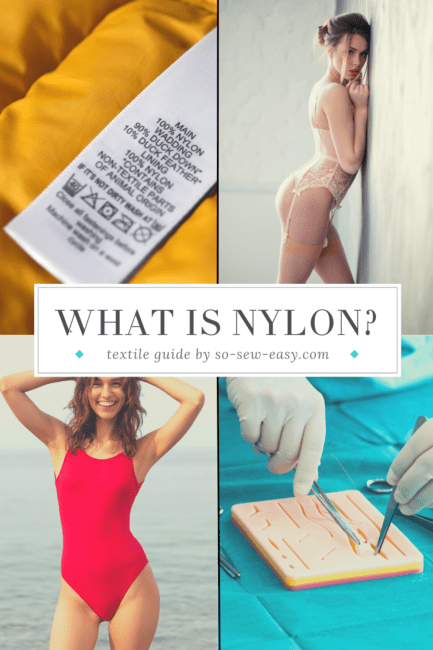
Nylon is a synthetic polymer, a type of plastic, that is known for its durability, strength, and versatility. It was first developed in the 1930s by a team of scientists at DuPont, led by Wallace Carothers. Nylon was one of the first successful synthetic fibers to be created.
What Is Nylon?
Nylon is created through a process called polymerization, where specific chemical reactions combine monomers to form long chains of repeating units. The resulting material is then spun into fibers or molded into various shapes.
Nylon fibers are widely used in the textile industry for making fabrics and textiles such as clothing, stockings, and carpets. It is known for its high strength, abrasion resistance, and elasticity, which make it suitable for a range of applications. Nylon is also used in the manufacturing of ropes, fishing nets, tire cords, and other industrial products that require strength and durability.
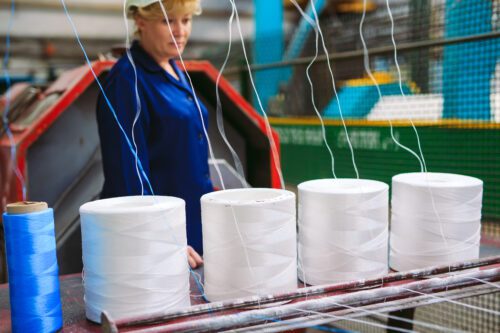

Besides textiles, nylon is used in various other applications. It is commonly employed in the production of engineering plastics, such as nylon-6 and nylon-6,6, which are used in automotive parts, electrical components, and consumer goods. Additionally, nylon is utilized in the creation of films, bristles for toothbrushes, musical instrument strings, and other everyday products.
Nylon In The Textile And Garment Industry
Nylon is widely used in the textile and garment industry. Nylon fabrics are used to create a variety of garments, including activewear, sportswear, swimwear, and lingerie. It is known for its lightweight, moisture-wicking, and quick-drying properties, making it suitable for athletic and outdoor apparel.


Nylon's debut in the fashion world was in women's hosiery, with the legendary “nylons” taking the market by storm in 1939. The stockings offered the allure of silk without its fragility and care demands, which revolutionized the hosiery market. To this day, nylon stockings and tights remain a staple in many wardrobes due to their sheerness, smoothness, and durability.
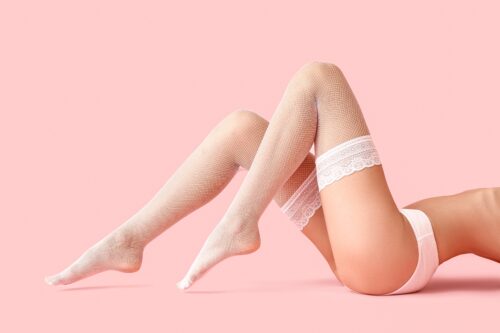

Nylon is often used in outerwear garments such as jackets, coats, and raincoats. It provides water resistance and windproofing, helping to protect the wearer from the elements.
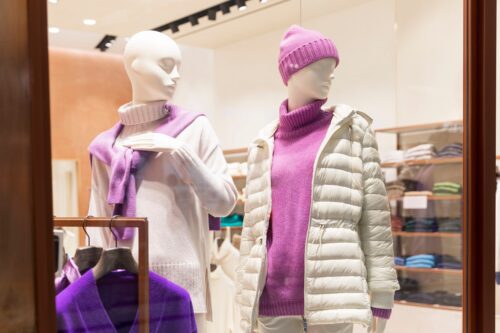

Beyond clothing, nylon is extensively utilized in the production of accessories. Fashion items such as umbrellas, wallets, handbags, and especially backpacks and luggage, rely heavily on nylon due to its strength and durability. The fabric's ability to resist abrasion and its low permeability to water make it ideal for products expected to endure daily wear and tear.


Nylon fabrics are used for upholstery and home textiles such as curtains, upholstery covers, and cushion covers. Its strength and resistance to wear and tear make it suitable for high-traffic areas.
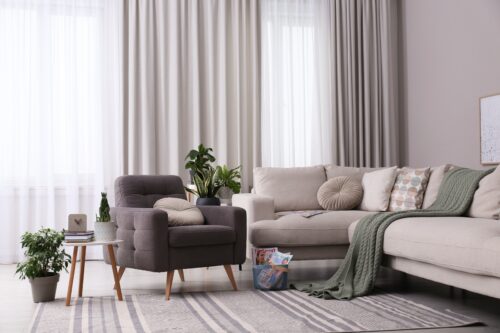

Nylon is utilized in various industrial applications such as conveyor belts, safety harnesses, and protective gear. Its strength, heat resistance, and abrasion resistance make it suitable for demanding industrial environments.
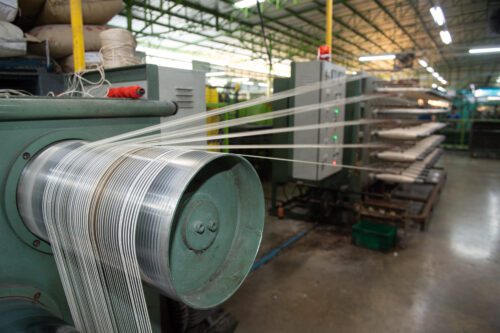

Nylon netting and mesh fabrics are commonly used in applications such as mosquito nets, sports equipment, and filtration systems. The lightweight and breathable nature of nylon make it ideal for these purposes.


Comparing Nylon To Other Synthetic Fibers
Nylon is just one of several synthetic textiles used in the industry. Let's compare nylon to other commonly used synthetic fibers:
Nylon Vs. Polyester
Polyester is another widely used synthetic fiber in the textile industry. It is known for its durability, wrinkle resistance, and ease of care. Compared to nylon, polyester has similar strength and abrasion resistance but is less breathable. Polyester is often used in apparel, home textiles, and outdoor gear.
Nylon Vs. Acrylic
Acrylic is a synthetic fiber known for its softness, warmth, and wool-like appearance. It is lightweight, quick-drying, and retains color well. Compared to nylon, acrylic has lower strength and abrasion resistance but is less expensive. Acrylic is commonly used in knitwear, blankets, and upholstery.
Nylon Vs. Polypropylene
Polypropylene is a synthetic fiber with excellent moisture-wicking properties, making it suitable for activewear and base layers. It is lightweight, quick-drying, and resistant to mold and mildew. However, polypropylene has lower strength and durability compared to nylon.
Nylon Vs. Spandex
Spandex, also known as elastane or Lycra, is a highly elastic synthetic fiber that provides stretch and recovery properties. It is often blended with other fibers, including nylon, to improve the fabric's stretchiness and shape retention. Spandex is commonly used in sportswear, swimwear, and form-fitting garments.
How To Style These Iconic Nylon Clothes
Let's look at how to style these iconic nylon pieces for an evergreen, chic appearance.
Windbreaker
Windbreakers, often made of synthetic materials like nylon, are an essential item for layering and transitioning between seasons. Their sporty and casual appeal can add an interesting element to various looks. Let's delve deeper into some stylish ways to wear a nylon windbreaker.
- The Sporty Chic: For a sporty yet chic look, pair your nylon windbreaker with high-waisted leggings or joggers, a fitted crop top, and a pair of sleek running shoes or high-top sneakers. This ensemble is perfect for a casual day out or even for an athleisure-inspired look for running errands. Add a pop of color with a bright windbreaker or keep it monochromatic for a more sophisticated approach.
- The Casual Retro: Embrace the retro vibe often associated with windbreakers. Try pairing a brightly colored or patterned windbreaker with high-waisted mom jeans, a simple white tee, and classic white sneakers. Add a pair of oversized sunglasses and some chunky hoop earrings to complete the look.
- The High-Low Mix: The high-low mix is all about combining casual pieces with more tailored or formal elements for an unexpected yet stylish look. Consider wearing your windbreaker over a midi slip dress or a blouse and tailored trousers combo. Finish off the outfit with a pair of heeled boots or strappy heels. The contrast between the casual windbreaker and the more formal pieces creates a unique and eye-catching outfit.
- The Festival Look: Festivals call for a blend of style and practicality, and what better item to use than a windbreaker? Layer it over a pair of denim shorts and a bralette or a graphic tee. Complete the look with combat boots and accessorize with a bucket hat and fanny pack. You'll be ready to dance the night away, no matter the weather!
- The Layered Comfort: As cooler months approach, your windbreaker can be an excellent layering piece. Wear it over a cozy turtleneck, pair with straight-leg jeans and ankle boots. Add a chunky scarf for additional warmth and style.
Nylon Tights
Nylon tights are a versatile piece that can effortlessly transition between seasons and occasions. They can add an extra layer of warmth during cooler months or lend modesty to shorter hemlines, all while helping to create a polished, cohesive look.
- Classic Monochrome: For a timeless and elegant look, pair black nylon tights with a black mini dress or skirt. This creates a streamlined, monochrome look that elongates the figure. Add a pair of black ankle boots or heels, and you have a chic, sophisticated outfit perfect for an evening out or a formal event.
- Pattern Play: Patterned tights are a fun way to add an element of surprise to an otherwise simple outfit. Try pairing polka dot or lace-patterned tights with a solid colored dress or skirt for a look that's both playful and sophisticated. Finish off with a pair of classic pumps and a matching handbag.
- Layered Casual: For a more casual, everyday look, try layering your nylon tights under a pair of distressed denim shorts or a denim mini skirt. Add an oversized sweater or hoodie on top for a relaxed, comfortable outfit. Complete the look with ankle boots or sneakers for a street style-inspired ensemble.
- Bold and Bright: Colored tights can add a pop of color to your outfit and make a bold fashion statement. Try pairing bright red or cobalt blue tights with a black or white dress for maximum contrast. This look is sure to turn heads and make you stand out from the crowd.
- Office Chic: Nylon tights can also help make shorter dresses and skirts more suitable for the office. Try a pair of sheer black tights with a pencil skirt and a blouse for a professional yet fashionable look. Pair with heels and a structured bag to complete the outfit.
Tracksuits
Nylon tracksuits, with their roots in athletic wear and their ties to pop culture, offer a wealth of styling opportunities. Let's explore some ways to bring this classic sportswear item into your daily rotation:
- Classic Sporty: Embrace the athletic origins of the tracksuit. Pair it with a clean, white pair of sneakers and a simple t-shirt or tank top. To keep the outfit from looking too gym-like, add some fashionable accessories: think statement sunglasses, a sleek backpack, or some chunky jewelry.
- Streetwear Edge: Give your tracksuit some streetwear edge by pairing it with chunky sneakers, a crop top, and a bucket hat. Throw on some statement-making accessories like oversized hoop earrings or a bold, chunky necklace. This look is perfect for a casual day out or for making a fashion-forward statement at a casual event.
- High-Low Mix: Combine the casual sportiness of the tracksuit with more traditionally luxe items for an unexpected and chic look. Pair your tracksuit with a silk camisole and heeled boots or strappy heels. Add a structured bag and some delicate jewelry to complete this high-low outfit.
- Layered Casual: On cooler days, layer a cozy, oversized sweater or hoodie over your tracksuit. This adds an extra level of comfort and makes the outfit suitable for a wider range of temperatures. Pair with chunky sneakers or ankle boots, depending on your style.
- Retro Inspired: Embrace the retro vibe of the tracksuit. Pair a brightly colored tracksuit with classic white sneakers and a graphic tee. Throw on a pair of aviator sunglasses and a chain necklace for a true 90s throwback.
Swimsuits
Whether you're on the beach, by the pool, or attending a summer party, there are plenty of ways to style a nylon swimsuit both in and out of the water.
- Beach Casual: For a classic beach look, pair your swimsuit with a breezy sarong or beach wrap. Add a wide-brimmed straw hat, sunglasses, and flip-flops, and you're ready to hit the sand. Don't forget your tote bag for your beach essentials!
- Poolside Glam: For a more glamorous, poolside look, consider a silky kimono or a sleek, sheer cover-up over your swimsuit. Pair it with wedge sandals and oversized sunglasses for that Hollywood glam vibe. Add a wide-brimmed hat for extra sun protection and style.
- Swimsuit as a Top: You can also style your one-piece swimsuit as a bodysuit, pairing it with high-waisted shorts, skirts, or jeans. This works great for pool parties or beach trips where you plan to transition from swimming to socializing. Complete the look with sandals and a crossbody bag for a casual yet chic look.
- Layered Look: Layering isn't just for cooler months! Try a loose, button-up shirt or oversized t-shirt over your swimsuit. Leave it unbuttoned or tie it at the waist for a more fitted look. Pair with denim shorts and slip-on sandals for a laid-back, effortless ensemble.
- Resort Elegance: For a more refined resort look, opt for a long, flowy maxi skirt or wide-legged palazzo pants over your swimsuit. This combination is both comfortable and chic, perfect for a beach dinner or a walk along the boardwalk. Add strappy sandals and a statement necklace to complete the look.
Environmental Impact Of Nylon
Despite nylon's widespread use and applicability in the fashion industry, the manufacturing and consumption of this synthetic fiber come with a host of environmental concerns. In this era of increased awareness and commitment towards sustainability, it's essential to shed light on these issues.
A Petrochemical Product
The production of nylon begins with the extraction of crude oil, as it is a petrochemical product. This process is not only energy-intensive but also contributes to the depletion of finite natural resources. Moreover, the extraction and refinement of oil lead to environmental pollution and contribute significantly to greenhouse gas emissions.
Energy-Intensive Manufacturing
The manufacturing process of nylon is energy-intensive and releases nitrous oxide, a greenhouse gas 300 times more potent than carbon dioxide, into the atmosphere. Additionally, copious amounts of water are used to cool down nylon fibers, leading to large quantities of wastewater that need to be treated.
Non-Biodegradable Waste
As a synthetic material, nylon is non-biodegradable, which means it can take anywhere from 20 to 200 years to break down in the environment. This contributes significantly to the growing problem of textile waste. When nylon garments end their life cycle in landfills, they can leach harmful substances into the soil and groundwater, affecting local ecosystems.
Microplastic Pollution
Every time a nylon garment is washed, it sheds tiny synthetic fibers known as microplastics. These microplastics are too small to be filtered out by wastewater treatment plants and end up in rivers, lakes, and oceans, contributing to the plastic soup that is causing harm to aquatic life.
The Fast Fashion Factor
Fast fashion, characterized by cheap, disposable clothing, has exacerbated the environmental impact of nylon. This business model encourages the overproduction and overconsumption of synthetic garments, leading to an increase in textile waste and microplastic pollution.
Conclusion
Nylon, since its introduction to the fashion industry, has revolutionized the way we dress. It's a testament to human ingenuity and our endless pursuit of practicality and style. However, as we continue to wear and love our nylon garments, it's essential to remember our responsibility towards the environment. By styling pieces we already own in creative new ways, we can extend their life and decrease the demand for new production, contributing to a more sustainable fashion future.
Throughout this exploration of nylon in fashion, we've delved into its many uses, the environmental concerns it presents, and the exciting ways to style five iconic nylon pieces. From windbreakers to swimsuits, the versatility and durability of nylon are undoubtedly impressive. But remember, in the face of fashion, we are not merely spectators but active participants who can steer the industry towards more sustainable practices.
If you've enjoyed this journey through the world of nylon fashion and wish to stay updated on the latest fashion tips, trends, and thoughtful insights, we invite you to join our email list. As part of our community, you'll receive regular updates straight to your inbox, so you never miss a beat in the fast-paced world of fashion.








Plastic fashion fabrics are even KILLING FISH AND ANIMALS AND HUMANS! MICRO PLASTIC IS IS EVERY BODY ON OUR PLANET !
How do I use the Kofi.com platform to specifically buy you a coffee Mayra?
Thank you very much for the insightful article on nylon and other synthetic polymers Mayra!
I recently became aware of the dangers to a person, should any of these types of materials catch fire, while in contact with the skin. At can even lead to the victims death.
Could you please expand on the topic of this danger? Are some of these materials made fire retardant ? And how does that affect their safety?
Kind regards,
Amanda Botha
Stellenbosch, South Africa